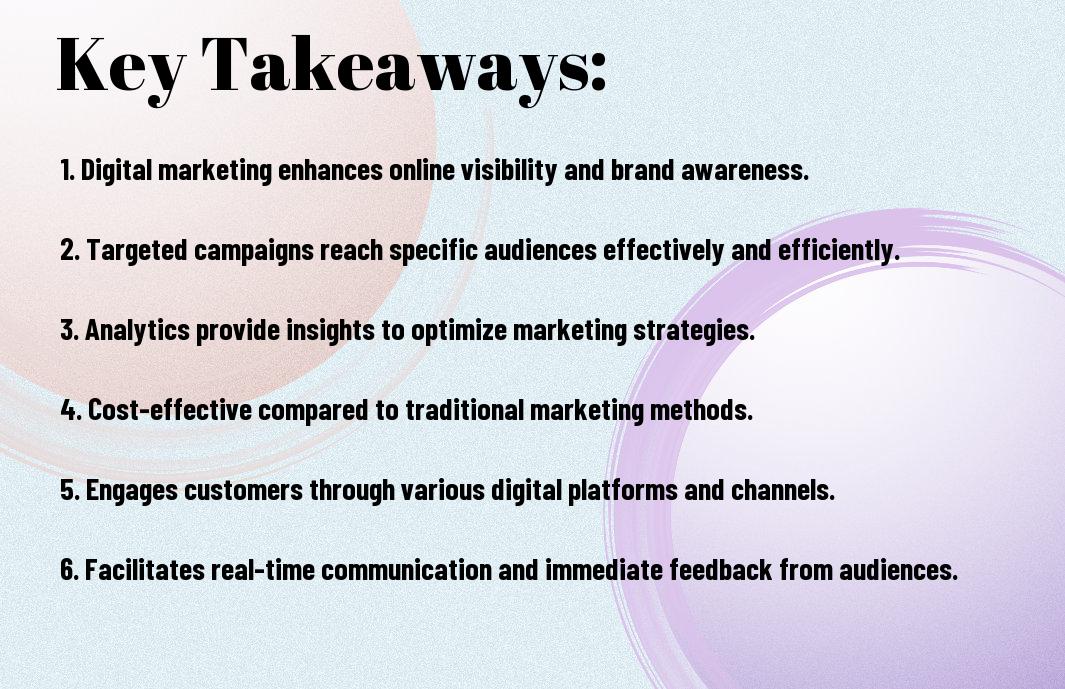It’s vital to understand the differences between growth and value investing as you navigate the world of stock markets. While growth investing focuses on companies that are expected to expand at an above-average rate, value investing seeks out undervalued stocks that may provide strong returns over the long term. This post will guide you through the core concepts of each strategy, helping you determine which approach aligns best with your investment goals.
Key Takeaways:
- Growth Investing focuses on companies that are expected to grow at an above-average rate compared to their industry or the overall market, often prioritizing potential future earnings over current valuation.
- Value Investing aims to find undervalued companies with solid fundamentals, looking for stocks that are considered to be trading for less than their intrinsic value.
- Risk and Reward profiles differ: Growth investing may offer high potential returns but comes with greater volatility, while value investing tends to be more stable but can require patience for the market to recognize the intrinsic value.

Understanding Growth Investing
To initiate on your investment journey, it’s important to comprehend growth investing. This strategy focuses on capitalizing on companies that are expected to grow at an above-average rate compared to their industry or the overall market. Growth investors seek stocks that promise strong earnings increase, even if these stocks come with higher price-to-earnings ratios.
Definition and Key Characteristics
For growth investing, you prioritize companies with significant potential for growth, often in emerging sectors or innovative fields. These firms typically reinvest profits back into the business rather than paying dividends, which you might find appealing if you’re looking for capital appreciation. Key characteristics include strong revenue growth, increasing market share, and often innovative products or services.
Pros and Cons of Growth Investing
Before deciding on a growth investing strategy, it’s beneficial to weigh its advantages and disadvantages. Below are some important points to consider:
| Pros | Cons |
| High potential returns | Higher volatility |
| Focus on innovation | May lack dividends |
| Long-term growth opportunities | Valuation risks |
| Greater market share potential | Time-consuming research needed |
| Exposure to trending sectors | Market competition risks |
And as you research deeper into growth investing, it’s useful to consider how each pro and con aligns with your investment objectives. While the allure of high returns and innovative sectors can be compelling, the risk involved and lack of immediate income can make this strategy unsuitable for everyone. Evaluating your financial goals and risk tolerance will help you determine if growth investing fits into your overall strategy.
Understanding Value Investing
Clearly, value investing is a strategy that focuses on identifying undervalued stocks with potential for growth. Investors using this method look for companies whose stock prices are below their intrinsic value, often determined through rigorous financial analysis. The goal is to purchase these stocks at a bargain and hold them until the market corrects the price, ultimately leading to substantial returns.
Definition and Key Characteristics
Beside focusing on price, value investing is characterized by fundamental analysis, a long-term investment horizon, and a disciplined approach. Investors prioritize metrics such as price-to-earnings ratios, dividend yields, and book values to determine undervalued opportunities. This strategy relies on buying solid companies with sound fundamentals that the market has temporarily overlooked.
Pros and Cons of Value Investing
At the same time, value investing comes with its set of advantages and disadvantages that you should be aware of. Below is a breakdown of both aspects:
| Pros | Cons |
|---|---|
| Potential for high returns if stocks rebound | Can tie up capital for long periods |
| Lower risk compared to growth investing | Market may take time to recognize value |
| Focuses on companies with strong fundamentals | Requires extensive research and analysis |
| Can provide dividends for passive income | Less excitement compared to growth stocks |
| Appeals to conservative investors | Relies on accurate assessment of intrinsic value |
Investing in value stocks can be appealing due to the potential for significant returns when the market corrects itself. However, you must also be prepared for the possibility that your investment may sit idle while the market takes its time recognizing the intrinsic value of the companies. A thoroughly researched approach helps you mitigate risks and make informed decisions, ensuring you understand the implications of your investment choices.
Key Differences Between Growth and Value Investing
Not all investments are created equal. Growth investing focuses on stocks that are expected to grow at an above-average rate, often leading to higher price-to-earnings ratios, while value investing seeks undervalued stocks, typically with lower P/E ratios. For a deeper dive, you may check this guide on Value Investing vs. Growth Investing: Which Is Better? to enhance your understanding of these two distinct approaches.
Investment Strategies
Between growth and value investing, your strategies will differ significantly. Growth investing involves identifying companies with significant potential for expansion and capitalizing on their upward trajectory. Conversely, value investing focuses on buying stocks perceived as undervalued, waiting for the market to recognize their true worth. Each approach requires different research and analysis tactics tailored to your financial goals.
Performance Metrics
Between growth and value investing, performance metrics reflect your investment’s success. Growth investors often analyze metrics like revenue growth, earnings per share, and market share, while value investors focus on ratios such as price-to-earnings, price-to-book, and dividend yield. These indicators will guide your decisions based on which style you choose to pursue.
Value investing emphasizes a fundamental analysis of companies’ financial health, often indicating stability and long-term potential. You will use these metrics to determine whether a stock is trading below its intrinsic value, thereby allowing you to make informed decisions and potentially benefit from price corrections over time.
Market Conditions and Their Impact
Unlike value investing, which can shine during market downturns, growth investing often thrives in bullish conditions. When the economy is flourishing, you’ll notice that growth stocks tend to attract higher investor interest, driving their prices upward. Conversely, in bearish markets, you may find that value stocks appear more attractive due to their foundational earnings and dividends, providing a safety net that growth investments may lack.
Economic Influences
After economic indicators such as GDP growth, inflation, and unemployment rates are released, your investment strategy may need to adapt. Positive economic growth tends to favor growth stocks as companies expand and consumers spend more. In contrast, a sluggish economy often leads you to value stocks, which may offer more stability and dividends during uncertain times.
Timing and Cycles
Besides economic shifts, market timing and cycles can also dictate the success of your growth or value investments. Each market cycle brings its own set of challenges and opportunities, pushing you to remain vigilant and responsive. Historical patterns show that as markets evolve, different sectors rise and fall, emphasizing the need for a keen eye on timing.
Impact of timing within investment cycles can significantly influence your returns. Growth stocks often outperform during economic recoveries as consumer confidence rises, leading to increased spending and company profits. Alternatively, during recessions or economic slowdowns, value stocks can often be more resilient due to their stable earnings and dividends. By understanding these cycles and their historical implications, you can position your portfolio to align with prevailing market conditions for optimal performance.
Investment Strategies for Beginners
Keep your investment journey simple by understanding the basic strategies behind growth and value investing. As a beginner, you might find it beneficial to explore various approaches to find what resonates with your financial goals. By stepping into the fundamentals of Growth vs. Value Stocks: Investing Styles, you can tailor your strategy for successful investing.
How to Choose Between Growth and Value
Before you make your investment decisions, assess your financial objectives and risk tolerance. Growth stocks often come with higher volatility and potential for substantial returns, while value stocks provide a more stable investment with regular dividends. Analyzing your investment timeline and comfort with market fluctuations will help you make an informed choice.
Building a Balanced Portfolio
Beginners should aim to create a balanced portfolio that reflects a mix of both growth and value investments. This diversification can help mitigate risks while allowing you to capitalize on the unique benefits of each investing style.
Also, consider allocating a percentage of your portfolio to different sectors and asset classes, which can further enhance stability and potential returns. By regularly reviewing and adjusting your holdings, you can align your portfolio with changing market conditions and your evolving financial goals, setting yourself up for greater success in the long run.

Common Misconceptions
All investors encounter misconceptions about growth and value investing. These misunderstandings can lead to missed opportunities or misguided strategies. By identifying and clarifying these misconceptions, you can make better-informed decisions that align with your financial goals.
Myths about Growth Investing
Above all, many believe that growth investing is solely about investing in trendy technology stocks. In reality, growth investing encompasses a wide range of sectors and focuses on a company’s potential for future earnings rather than its current valuation. This broad approach allows you to uncover various opportunities across different industries.
Myths about Value Investing
Alongside growth investing, value investing is often misunderstood as being synonymous with buying cheap stocks. There’s a prevailing belief that value investing is simply about looking for undervalued companies, but this approach involves a deeper analysis of a company’s fundamentals and competitive advantages. You should evaluate a business’s overall strength and potential for appreciation, not just its market price.
And while value investing does focus on perceived undervaluation, it is necessary to conduct thorough research on the quality of the business behind the stock. High-quality companies can sometimes be priced above traditional value metrics, reflecting their durability and potential for growth. By focusing on quality and long-term performance, you can develop a strategy that resonates with your investment philosophy.
Conclusion
From above, you’ve learned that growth and value investing serve different strategies in your pursuit of maximizing returns. Growth investing focuses on companies with potential for significant expansion, while value investing seeks undervalued stocks that promise stability. By understanding these approaches and assessing your financial goals, risk tolerance, and market conditions, you can make informed decisions that cater to your investment style. Whether you choose to focus on growth, value, or a blend of both, a strategic mindset will guide you in building a resilient investment portfolio.
Q: What is the main difference between growth and value investing?
A: The main difference between growth and value investing lies in the investment focus. Growth investing concentrates on companies expected to experience significant earnings growth in the future, often trading at higher price-to-earnings (P/E) ratios due to anticipated future performance. In contrast, value investing seeks to identify undervalued companies whose stock prices do not reflect their intrinsic value, typically shown by lower P/E ratios and strong fundamentals. Investors in value stocks believe that the market has undervalued these companies and that their prices will eventually rise as their true worth is recognized.
Q: What types of companies are typically associated with growth investing?
A: Companies associated with growth investing are usually in emerging industries or sectors with innovative products and strong potential for expansion, such as technology, biotechnology, and renewable energy. These companies often reinvest their earnings into business development rather than paying dividends to shareholders. Investors are attracted to these companies due to their high growth rates, which can lead to substantial capital appreciation over time, even if the stocks come with higher risks.
Q: How do investors decide between growth and value investing strategies?
A: Investors deciding between growth and value investing strategies often consider their unique financial goals, risk tolerance, and investment timeline. Growth investing may appeal to those willing to accept higher volatility for potentially higher returns, especially if they have a longer time horizon. Conversely, value investing may attract individuals seeking more stable investments with less price fluctuation and a focus on dividends. Investors may also choose a hybrid approach, blending both strategies to build a diversified portfolio that balances potential growth with value preservation.




